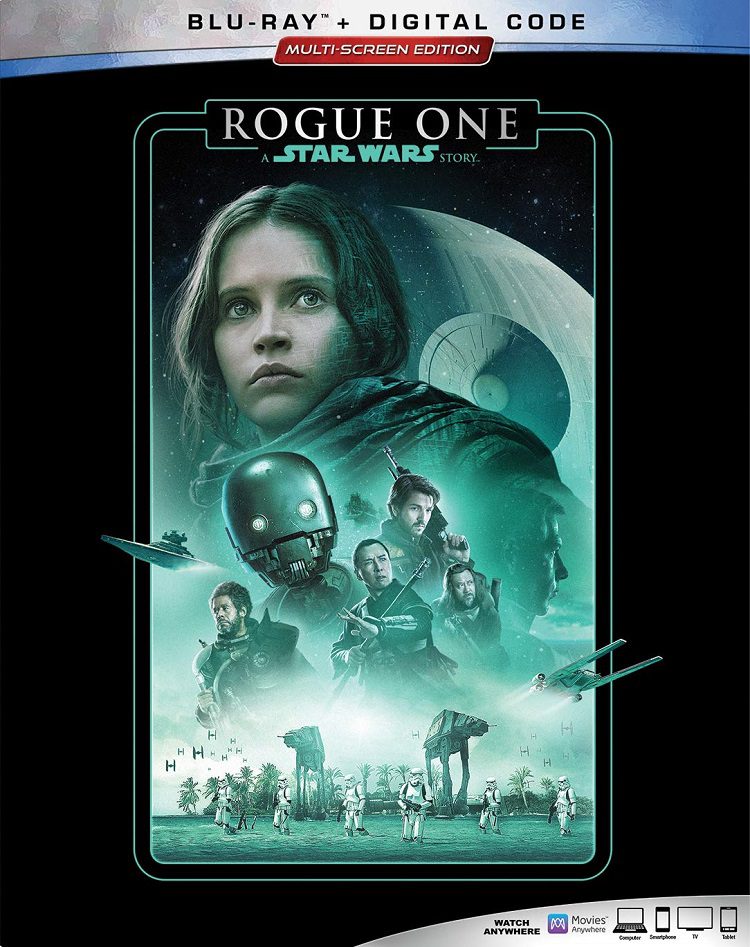
Rogue One is the latest entry in the ever-expanding Star Wars cinematic universe. Reminiscent of war movies like The Dirty Dozen, it tells the story of how the Rebel Alliance obtained the plans for the Galactic Empire’s Death Star, which they put to good use, as those familiar with Star Wars: A New Hope can attest. Rogue One is a special-effects wonder filled with good action; however, the plot, specifically character choices and motivations, is not well thought out, and at times the film gets a little too inside baseball for those not part of the cult.
As a young child, Jyn Erso is essentially orphaned after Orson Krennic (Ben Mendelsohn) kills her mother and shanghais her father Galen (Mads Mikkelsen) to work on Death Star. Years later, she (Felicity Jones) is recruited by the Alliance to help find her father, although considering how long they’ve been apart, I am not sure why anyone thinks she could.
Galen was able to get a holographic image of himself snuck out where he talks about his love for Jyn and being forced to work on the Death Star. Some in the Alliance want him killed rather than make use of his intellect for their own technological benefit, but considering he didn’t include the Death Star plans, which are vastly more important than a video appealing to a daughter he doesn’t even know is alive, how bright could he be?
As a unit, the Alliance vetoes a mission to obtain the plans, but Jyn and a ragtag team rebel against the Rebels, otherwise there would be no movie, so off to the Imperial base they go. There’s a mix of overly familiar plot points, such as the need to turn off a shield to complete the mission, with enough new stuff to keep it interesting as the action and imagery overwhelm the senses.
Unfortunately with so many characters on screen, there’s very little time given for the audience to grow attached to the new ones. The villainous Krennic and Chirrut Îmwe (Donnie Yen), a blind man who is aided by his belief in the Force and his friend Baze Malbus (Jiang Wen), were the two most interesting but even they came off a tad generic. They could well be fan favorites as their stories are presumably fleshed out in future comics, novels, et. al., but that doesn’t help the viewer in the moment. I will give credit to the writers for the choices made about the outcomes for the heroes as they were slightly unexpected, and it was good to see Stormtroopers that could hit things with their weapons.
Well-known Star Wars characters appeared in the film also and their execution was a mixed bag. Darth Vader has one of his most memorable scenes in the franchise as he goes into battle. Unfortunately, 85-year-old James Earl Jones doesn’t have the same power in his voice that he had 40 years ago, and the character sounds weak and tired when he speaks. Grand Moff Tarkin is on hand, but rather than recast the role, they made use of Peter Cushing’s digital likeness. While seeing actors animated as characters in video games is commonplace, Cushing digitized face alongside human actors created moments of disbelief. Another character appears in the same manner, but only occurs in one scene so it wasn’t as distracting. While The Force Awakens ignored the prequels, it was not only good but made sense to see a character from that trilogy. There’s a funny cameo by characters from A New Hope that works and another featuring more iconic characters that comes across forced.
Aside from Tarkin, both the visual and sound effects teams did very impressive work, especially the battle scenes in space and on the ground. I attended a 2D Dolby Cinema screening, and the viewer is immersed in the film. Star Wars fans who enjoy digging deeper into this universe should be happy with Rogue One and all the opportunities it provides. Action fans should also be happy with the results. If not in either camp, Rogue One has little else to offer.